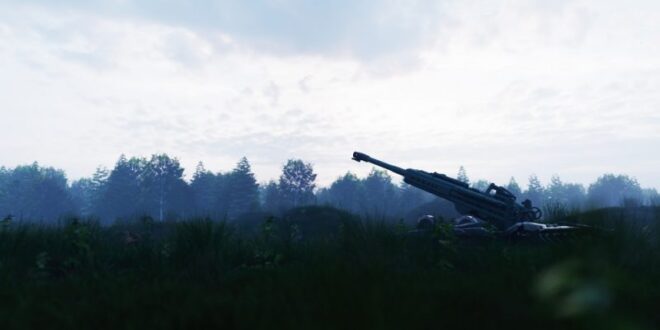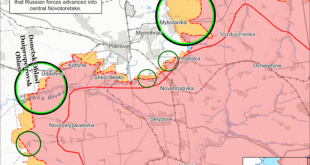Talks to reach a political agreement on the joint procurement of ammunition for Ukraine are set to continue on Friday (17 March), as EU ambassadors seek to remove the final hurdles ahead of the expected approval next week.
So far, the bloc’s envoys have failed to reach a consensus on the details of the plan, presented by the EU’s diplomatic service (EEAS) at the beginning of March.
The EU-proposed three-track plan aims to financially support member states to send ammunition from their current stocks to Ukraine, boost 155mm ammunition production and ramp up the bloc’s overall industrial production capacity.
EU defence ministers last week agreed in principle to use €2 billion from the bloc’s European Peace Facility (EPF), an off-EU budget fund, to finance the first two tracks.
While the EU27 seem to have reached an agreement that €1 billion will be used to send shells from their existing but largely depleted stocks, discussions remain over other “how to use” the other €1 billion, according to three EU diplomats.
The idea is to get approval for the plan during a joint meeting of EU foreign and defence ministers on Monday (20 March), before getting final sign-off from EU leaders at their regular summit in Brussels later next week.
According to the latest draft conclusions, seen by EURACTIV, EU leaders are expected to “welcome the swift agreement in the Council to facilitate the immediate provision of ammunition for Ukraine, including through joint procurement and the mobilisation of appropriate funding”.
However, two main points of division remain: whether member states will have to rely on EU-based industry or be able to procure ammunition from third countries, and what reimbursement rate from the fund they can expect.
Where to buy?
Ukraine’s Western allies warn that Kyiv is facing a critical shortage of howitzer shells as it fires thousands each day in its fight against a grinding Russian offensive.
Kyiv has told the EU it needs 350,000 shells a month to help fight back the Russian assault and allow it to launch its own counter-offensives.
The EU’s Joint Procurement Task Force – involving the European Commission, EEAS and EU’s Military Staff (EUMS) – has identified 15 industries in 11 member states to produce 155mm NATO standards artillery ammunition, and five producers of 152mm Soviet-era type ammunition.
European Internal Market Commissioner Thierry Breton is currently touring member states that have the potential to ramp up ammunition production – having visited Bulgaria, and expected to next travel to Slovakia, the Czech Republic, Poland, France and Romania.
However, some member states wish to be allowed to purchase ammunition outside the EU for Ukraine if Europe cannot produce it domestically and fast.
“The current EU production capacity is larger than in many of our non-EU partners. However, almost all of this production is already contracted,” European Commissioner for Financial Services, Mairead McGuinness, told EU lawmakers on Wednesday (15 March).
“We don’t know if the European industry can produce according to the needs. If it’s not able to do it fast and in big amounts, we should be allowed to look towards third countries,” one EU diplomat told EURACTIV. Potential non-European suppliers could include the United States and South Korea.
This comes as EU officials and some member states such as the Baltics, Poland or the Netherlands claim that the urgency of supplying ammunition to Kyiv and the limited production capacity on the continent could delay urgent deliveries even further.
The war “is currently in one of its most dangerous phases”, which would make ammunition “one of the main priorities”, an EU senior official told reporters last week.
However, on the other of the debate, France, Greece and Cyprus believe that the EU member states’ money should be used exclusively for EU-based industry.
Member states are also divided over which procurement agent to use, between the existing European Defence Agency (EDA) or a so-called ‘lead nation’, which would take the lead on contracting with companies on behalf of a coalition of member states.
Co-financing rate
The EU27 and the bloc’s diplomatic service have seemingly come up with an agreement i principle on how to split the costs between the EU’s weapons fund and the member states’ own direct financing for supplying jointly procured ammunition to Ukraine, according to two EU sources.
Under this understanding, member states’ procurement costs will be reimbursed at between 50-60%, via the EPF’s ammunition joint procurement.
Poland, however, has been arguing for better foresight and a higher reimbursement rate – in both the current discussions on ammunition procurement and the previous seven rounds of aid from the fund.
Long-term approach
Following a political agreement in December, member states this week approved the decision about increasing the EPF budget by €2 billion in 2023 and allowing a further raise up to €5.5 billion by 2027.
It raised the financial ceiling of the EPF to nearly €7.98 billion until 2027, which is earmarked for military aid to Ukraine, but also other countries around the world.
However, it is unlikely to be enough in the long-term to meet current needs.
Asked about how the EU could avoid a ‘band-aid’ approach of having to top up the fund every once in a while as needs arise, the EU’s chief diplomat Josep Borrell told EURACTIV member states would need to make a decision about a potential top up soon.
“The question is: Do we want to continue using this tool to arm Ukraine, and how do we support the armies of our partners, for instance, in Africa? There are a lot of commitments (…) it costs money, and the member states will have to decide,” Borrell said.
Asked whether the joint procurement plans to secure fast delivery of ammunition could go beyond artillery shells and towards more heavy weaponry, Borrell said the EU “could be equally fast for other needs“.
The third track of the EU-proposed plan – to support the longer-term ramping up of the European defence industrial base as part of the initiative for ammunition joint procurement for Ukraine – is yet to be widely discussed among member states.
In June, the EU’s executive presented a proposal to incentivise joint procurement of weapons for Ukraine (EDIRPA), for which negotiations are currently ongoing in the European Parliament. EU lawmakers are expected to give an opinion on its feasibility by the end of April.
Besides this initiative, ideas to boost production include financing opportunities by the European Investment Bank (EIB), currently only allowed to finance dual-use equipment, and the European Defence Fund (EDF), which funds research and development, another senior EU official said.
 Eurasia Press & News
Eurasia Press & News

